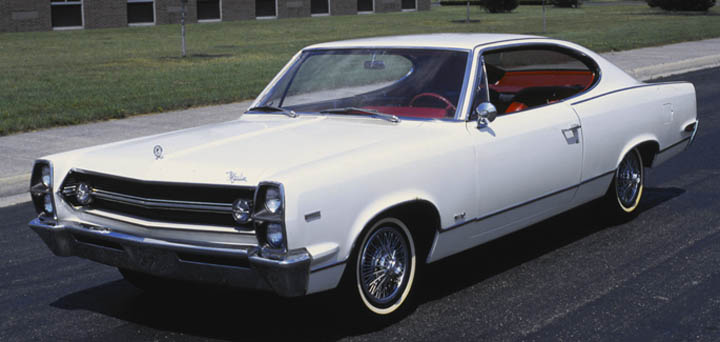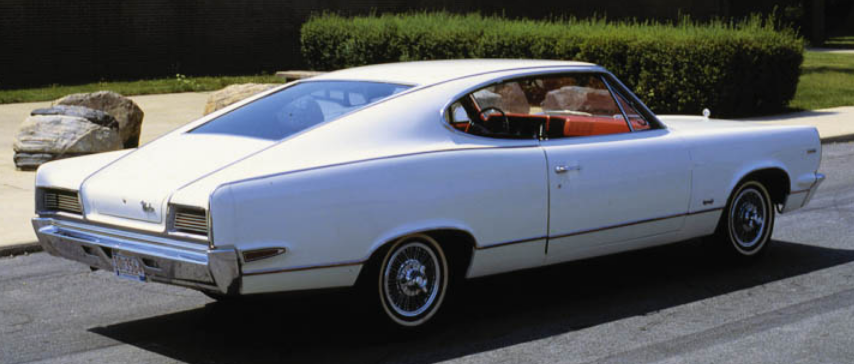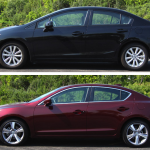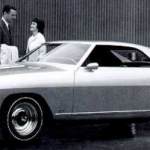
Don Sikora’s recent flashback on the Rambler/AMC Marlin reminded me of a story I heard from the man who designed it, the late Richard A. Teague. I was privileged to interview Dick six or seven times in the late 1980s for Collectible Automobile magazine. (He died in 1991.) Some of those visits took most of a day, but Dick always had time for a fellow car nut. I came to think of us as friends partly because of that, though strong acquaintances would be more accurate. The key point is that we enjoyed each other’s company because we always had so much to talk about.
Actually, Dick seemed to enjoy most everyone’s company. Whether at media events, old-car shows, or charity fund-raisers (he was quite involved in many causes), he was cheerful and outgoing, a big-hearted man with a teenager’s enthusiasm for life, a puckish sense of humor (he never gave a dull interview), a warm and ready smile, and, refreshingly, no “designer ego” or defensiveness. When I began getting to know him, about the time he retired after 22 years as American Motors design chief, Dick had come to terms with history’s verdicts on the Gremlin, Pacer, Matador coupe, the Marlin, and other cars attributed to him. He knew he’d done his best under the trying conditions that were the way of working life at AMC. And though he was proud of everything he’d done, he wasn’t afraid to chuckle at some of those things either.
The 1984 AMC Eagle Limited Wagon Price Power Quiz
If you don’t know of Mr. Teague, do look him up online or, better yet, read the sterling design history A Century of Automotive Style by Michael Lamm and the late Dave Holls. That book quotes the Wall Street Journal as saying that “Teague’s specialty is styling on a shoestring.” I prefer to remember Dick as an underappreciated talent who could do more car with less money than most other designers in the business, typically because he had no choice.
Now to his Marlin story. The “first man-size sports-fastback” was a literal outgrowth of Teague’s 1964 Tarpon concept. Based on his pretty American compact, the Tarpon met such an enthusiastic response that company publicists briefly hinted that the car was headed for showrooms. But AMC President Roy Abernethy had other ideas. As Teague told me, “Abernethy was always trying to outdo the competition. If they had a 2+2,” like the new-for-’65 Mustang fastback, “we had to have a 3+3.” (By the way, it was Teague who came up with both the Tarpon and Marlin names.)
Accordingly, Teague and his staff were told to scale up the Tarpon as a new body style for the 1965 midsize Classic line, whose styling was more or less locked up. Dick was not pleased. “It’s hard to make a big fastback look good,” he told me. “You can make a long roof only so large before it starts looking fat.” The sloping superstructure was also at odds with the Classic’s square lower-body lines. Because the entire design seemed to hang on the rear-side-window/roof-pillar treatment, the team worked up numerous proposals before settling on one of their first ideas: a long, Tarpon-like window opening with a pointy curve at the rear. It looked a bit awkward from some angles and left huge rear-quarter blind spots with the roof’s flat-planed top surfacing, but it did avoid the closed-in cabin feel that Teague feared might result.
Mitt Romney and the Auto Bailout
A mockup for executive review was built by putting a makeshift fastback roof on a Classic convertible. Teague still wasn’t happy with the looks, “so we did everything we could to make that S.O.B. sexy. We painted it Candy Apple Red and had the suspension tied down tight.” The showing went well until Abernethy decided to try the back seat. “He always wanted us to have the best headroom,” Teague recalled, “and then he hit his head on this piece of wood that we used to support the roof. It was just for display, you know, not for production, but it made him mad and he said ‘raise that roof.’” The increase wasn’t much: somewhere between a half-inch and full inch, if I recall correctly. In any case, Teague said it was enough to spoil the whole car because it required changing the roof’s smooth downward flow, resulting in a kind of “humpback” profile.
The Marlin finally came good for 1967, when it was moved to the Ambassador chassis and gained a longer front end that balanced the big roof, abetted by shapely new lower-body sheetmetal from Teague and company. I, for one, still think it quite handsome, at least the equal of the contemporary first-generation Dodge Charger. But the damage had been done, and the Marlin slipped into history after 17,419 were built, of which 2,545 were ’67s.
So now you know why the Rambler/AMC Marlin turned out the way it did—and why it was something less that it might have been. For Dick Teague, though, it was just another day at the office, which may explain why he could seem so philosophical when we chatted about it. Then too, he more than redeemed himself in the eyes of later critics with the 1968 Javelin and AMX, not to mention the mid-engine two-seat AMX experimentals, one of which he had in his garage. I know I’ve got some Teague stories about those cars floating around somewhere. Stay tuned.




